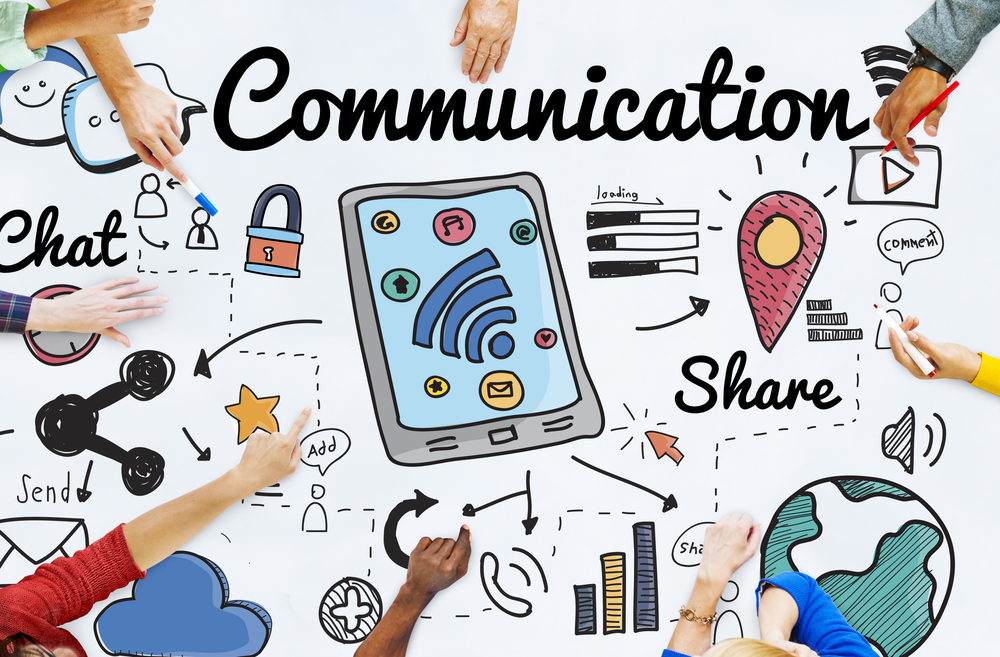Communication is key in the workplace
Why is effective communication important in the workplace?
7 common types of communication in the workplace
1. Leadership communication
Leaders communicate with their teams in a one-way manner rather frequently. Informing or updating readers on a new business policy or a change in course is one possible purpose of a memo. Leaders also frequently use communication to compel, uplift, and motivate loyalty. Rather of using statistics to convey, they frequently use tales.
2. Upward communication
In addition to other leaders who are not directly under their direction, managers (and team members) frequently need to communicate with other managers. These might be reports, emails or memoranda, or a spot in a regular meeting. These kinds of communications, regardless of format, ought to be regarded as more official.
3. Updates
Updates are by their very nature brief, therefore they frequently fall short of becoming a powerful form of communication. Make use of a visual dashboard or tracker to do the heavy lifting; reserve your written or spoken commentary for highlighting the most crucial information, which is usually what needs the audience to take action on or become more involved with. This might involve successes as well as shocks, challenges, and even hazards.
4. Presentations
It makes sense that these official communication events draw the most attention. Presentations are a type of communication tool where the stakes are usually higher and the audience is larger. Their goals include educating, swaying, and convincing.
5. Meetings
Regardless of size, meetings are an essential component of an organization’s internal communication plan. Additionally, they rank among the least common and overused forms of communication. Efficient meetings foster team cohesion and expedite the dissemination of information that may be misconstrued in other formats, such as electronic communication. The most productive meetings foster strong teamwork and leave attendees feeling motivated rather than exhausted.
6. Customer communications
Customer communication can take several forms, ranging from one-offs to in-person interactions, virtual or in-person, spoken or written, official or informal. Generally speaking, all of the factors that affect staff communication also affect customers. Plan your communications carefully so that they meet your customer’s demands in the manner of their choice and leave a good image of the business and the goods.
7. Informal interactions
Informal communications encompass the emails and conversations you have throughout the day, such as requests, information requests, response to inquiries, and offering and receiving assistance and direction. These informal conversations have the secondary goals of advancing the organization’s work as well as fostering social ties, creating a culture of trust, and identifying points of agreement.
8 reasons to work on your communication skills
1. Better engagement
Increased employee engagement leads to better communication, and employee engagement is a crucial indicator of productivity and retention potential. It reaffirms that your employees are valuable members of the team that the business appreciates for their special talents and expertise. To put it another way, their input and participation really do matter.
2. Increased morale
Team members who are dissatisfied with their jobs tend to take longer vacations, work less efficiently when they are present in the office, and frequently have a negative influence on the output of their coworkers. On the other hand, workers who are aware of their responsibilities and how they contribute to the team’s success as a whole work with greater vigor and pride.
3. Improved productivity
Improved communication skills enable workers to understand their jobs more clearly, which improves workers’ ability to carry out their allocated responsibilities. By using these strategies, one may save time and resources, increase productivity, and lessen stress.
4. Reduced churn
Experience is valuable to the organization and its clients, and this applies to both senior technical professionals and customer care agents. Furthermore, no company wants to lose money on the high expenses of hiring and onboarding talented workers who leave early. Communication is a critical component of employee engagement and happiness, and it benefits the company by lowering the rate at which knowledgeable and experienced employees leave.
5. Greater loyalty
Longer-term, retaining staff for a number of years can strengthen the business and have an effect on profits. Years of experience are sometimes needed in many positions before a person is qualified to manage people, spur creativity, and handle challenging situations. An employee’s loyalty to the firm is determined by how they feel about it and how they are treated as individuals.
6. Better collaboration
Nowadays, the majority of businesses employ technology that don’t need team members to be in the same building, nation, or even same room. Since this change creates new communication obstacles, managers should support cooperation by assisting teams in efficiently utilizing the newest technology for communication.
7. Fewer workplace conflicts
Miscommunication is the root cause of many confrontations. Negative relationships or even poisonous or violent work settings can result from poor communication. Establishing effective communication may enhance workplace culture and reduce miscommunications between supervisors and staff. This entails developing and perfecting communication techniques that emphasize empathy, listening to others, and taking into account individual variations.
8. Greater motivation
Psychologists have shown that people are less likely to comprehend or recall a notion if they do not know the “why” behind it. This is true for a lot of facets of people’s professional life. One of the most important communication skills for a manager is to understand the “why” and respond with the “because.” This strategy will assist you in inspiring staff members.
In summary, improved workplace communication leads to happier workers, more productive teams, and employees who feel more empowered. You may completely change your firm by having staff members at every level enrolled in one or more of our pertinent corporate communication training courses.

